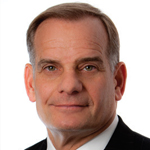What we know from current behavior is that just 15% contribute the maximum, according to Devenir. More than 30% do not contribute any money at all in a given year.
Shrinking savings—Most HSAs are churn accounts, and saving might actually be going down instead of up. Devenir’s latest report found participants holding over less in 2016, just $5.7 billion, compared with $5.9 billion in 2015 and $6.2 billion in 2014.
A HelloWallet study from 2015 found that nearly 30% of HSA participants spent nearly all they contributed in a year.3
This finding is not necessarily a bad thing, because you still get a tax deduction for the contribution, says Paul Fronstin, director of Health Research and Education for EBRI.
Losing to inflation—Most of the $37 billion in HSA accounts is sitting in cash, with only $5.5 billion invested in any way, according to Devinir. EBRI’s study found that investments made up only about 3% of the total deposits. In today’s low interest-rate environment, that means these accounts are not keeping up with inflation, and actually losing value over time.
“If you think you’re going to spend most of the funds, it doesn’t make sense to invest it,” says Evan Powers, a certified financial planner with Cypress Financial Planning in Charlottesville, Va., and an adviser for myfinancialanswers.com.
Those who are saving and investing are doing better—they have an average balance of $14,971, seven times larger than those who do not invest.
“The missing component is consumer education,” says Ascensus’ Christenson.
References
- Fronstin P. Health savings account balances, contributions, distributions and other vital statistics, 2015: Estimates from the EBRI HSA database. Issue Brief. 2016 Nov 29.
- Devenir Group LLC. News release: 2016 Year-End Devenir HSA Research Report. 2017 Feb 22.
- Spiegel J. Health savers: The consumer finance of health savings accounts. HelloWallet. 2015 Jul.


